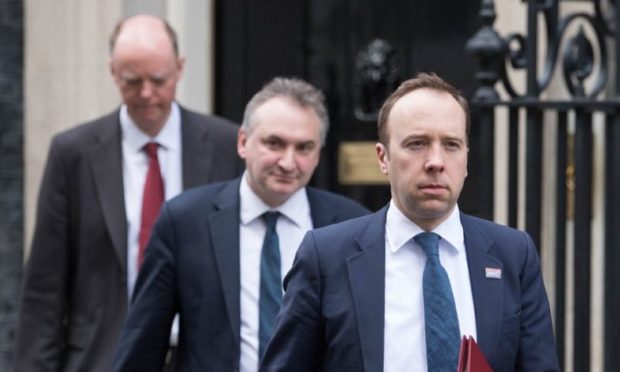There is no right or wrong answer in healthcare, there is only risk.
There are options with greater risk, and options with less risk.
When it comes to the Coronavirus outbreak it is tempting to compare ourselves with other countries. Did China get it right or wrong? What did Italy do to lead to such a severe outbreak there? Should we be closing schools, like Ireland? In reality, all these countries have weighed up difficult risks, with limited information, and reached different conclusions.
We usually call upon the scientific evidence to give us hard facts to base policy upon but this virus has emerged so quickly that our scientists are still learning about it. They are still learning how long you can be infectious without displaying symptoms (seven days is the current best guess), they are learning about the death rate (1% but this may change) and have discovered the relative good news that young people seem to have better levels of resilience. There are still many unknowns, like how long it survives outside the body or how many people have the virus without any symptoms at all.
We also don’t know how many people will get the virus at the peak of the epidemic but it could be as many as eight out of ten of us. Having spent more than a decade reporting on the healthcare system in Scotland, there’s no doubt in my mind that it would not cope. That is not a criticism of our NHS, it is common sense. No healthcare system in the world is capable of dealing with a fatal infection in an additional 1% of the population (around 5,000 people in Scotland) pretty much at the same time. During the much milder swine flu outbreak of 2009 those with severe breathing difficulties were put on special ‘ECMO’ machines which took over their breathing and saved their lives. There are only a handful of these machines in Scotland and only 15 in England, meaning you either want to be the first to get severely ill with coronavirus or the last, because there will be a very long queue for specialist treatment for everyone else.
The UK and Scottish governments have stated that their strategy is to slow down the pace of the epidemic. On a graph, they want it to look more like an upturned basin than an upturned ice cream cone. This gives the scientists more time to learn about the virus, the NHS more time to prepare and less chance of being overwhelmed, and it gives the weather a chance to warm up, boosting our immune systems and reducing the amount of time we spend cooped up indoors.
This is where we get into the complex world of risk. The scientific risks cannot be considered without also considering human behaviour. If we close schools, where will many children go? To their grandparents of course, thereby introducing thousands of little germ incubators into the homes of those who are most vulnerable. In order to have any effect, the schools would need to remain closed for many weeks and bored children would inevitably play with their friends, undermining the policy completely. In the meantime everyone with school-aged children would have been inconvenienced and may have had to stop working. If the country is put on hold too early then people will get fed up (or bored or desperate) and go back to their normal routines just at the very point when you need them to stay at home.
There is the risk to the elderly but this has to be balanced against an entirely different kind of risk to the young. The measures taken so far have already had a devastating effect on the working aged population. An airline has gone bust. The cruise industry must be facing huge losses. Hotels are emptying. Anyone connected with the events industry is watching their income disappear. This won’t cause deaths immediately but the long-term effects of a recession will. There were an additional 5,000 suicides alone as a result of the 2009 recession. The impact of the stress and poverty will cause much more suffering and countless further fatalities.
So we need to keep our elderly safe but the economy moving. It’s an impossible situation in which there are no winners except, perhaps, the manufacturers of hand gel (and, curiously, toilet roll). The gloomy choice for our politicians is between one section of the population or the other – who do we protect, and who has to take their chances?
Beside regular hand washing, we have no choice but to put our faith in our elected leaders. Do we have a system which promotes people with life experience and good judgement into positions of power? Have they worked in business, healthcare or society prior to entering politics? Are they honest and trustworthy or bullies and cheats?
We are facing the greatest health threat in a generation. Let us hope our leaders are surrounded by experienced advisers, that they have the humility to listen to them, and that we can trust them properly to weigh up the risks in the biggest gamble of their lives.
Eleanor Bradford is a former BBC Scotland Health Correspondent and now works in communications in the education sector











